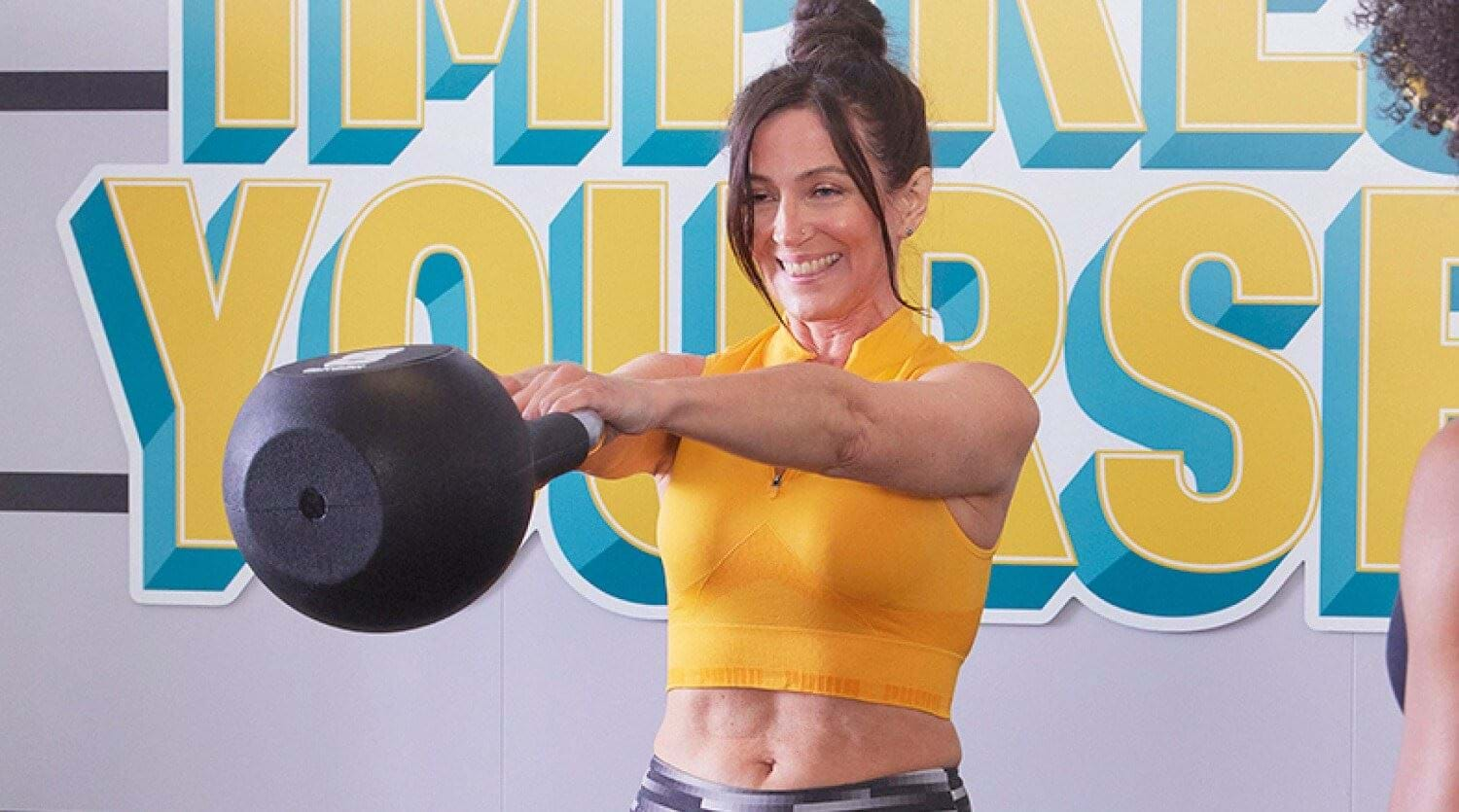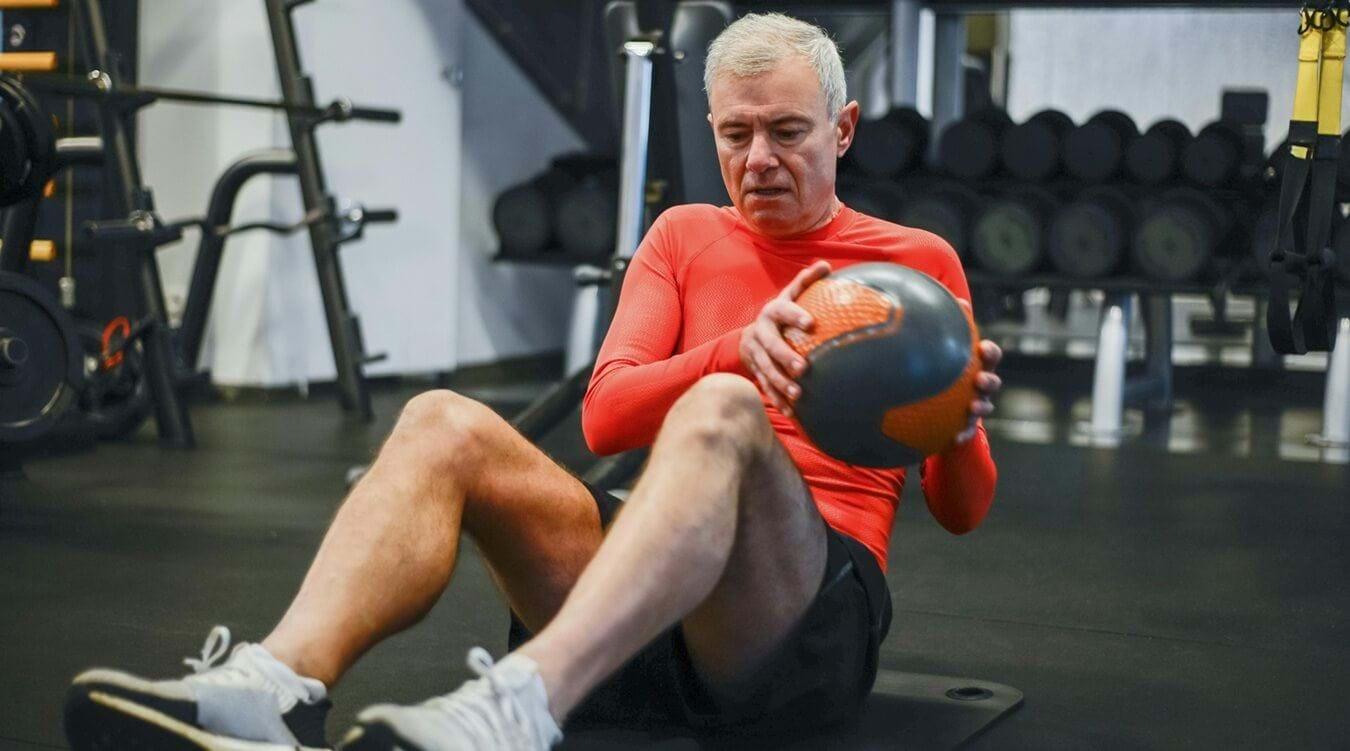Metabolic Resistance Training - How It Works & Best Exercises

What Is Metabolic Resistance Training? | MRT Vs HIIT | Benefits Of MRT | The Best Exercises For MRT | MRT For Fat Loss
Metabolic Resistance Training, known as MRT, is one of the best ways to achieve fat loss and build strength simultaneously.
It's a high-intensity approach to exercise that challenges both your muscles and cardio system, making your workouts more efficient and effective. Whether you're short on time or looking to break through a fitness plateau, MRT is a great way to shake up your workout routine to help you burn fat, boost endurance, and sculpt lean muscle - all in one session.
Read on to learn how MRT works, what exercises fit into its definition, how it differs from HIIT and whether it can help with fat loss.
What Is Metabolic Resistance Training?
Metabolic Resistance Training (MRT) is a workout style that combines strength training with high-intensity intervals to maximise calorie burn and boost metabolism.
Unlike traditional weightlifting, where you mainly focus on lifting heavy with plenty of rest in between, MRT involves performing a series of resistance-based exercises (like squats, deadlifts, or kettlebell swings) with minimal rest. This keeps your heart rate elevated throughout your session, which helps you burn more calories both during and after your workout.
What Is The Main Goal Of Metabolic Resistance Training?
People who do metabolic resistance training are usually looking to build muscle while also improving their cardio fitness (in a sort of ‘two birds one stone’ approach). Plus, by elevating your metabolism, you’ll continue burning calories even after you’ve left the gym, thanks to something called the "afterburn effect." This means that your body continues to burn calories well after you finish working out, so you'll continue to benefit from your training session, even when your body is at rest.
This type of training is highly adaptable and can be adjusted for all fitness levels, whether you're just starting out or looking to push yourself harder. It’s a great way to challenge your body, improve endurance, and promote fat loss, all while building strength.
Metabolic Resistance Training Vs HIIT
Metabolic resistance training and High-Intensity Interval Training (HIIT) are both great for burning fat and improving fitness, but they work in slightly different ways.
With MRT, you're lifting weights or using resistance-based movements while keeping rest periods short. The focus is on building strength and muscle while also pushing your heart rate up. This combination helps you burn calories both during the workout and afterwards.
HIIT, on the other hand, is typically about cardio-based intervals, hence the 'interval' part of the name. You'll alternate between short bursts of maximum intensity effort - like burpees, exercise bikes or jumping - and brief rest periods. While you can get HIIT workouts that incorporate strength training, it's usually a secondary factor, with the focus on hitting your max intensity during the workout intervals . HIIT is incredibly effective for improving cardiovascular fitness and burning calories quickly, but it doesn't focus on building muscle as much as MRT does.
Another difference is the length of workouts. HIIT workouts are usually between 10-20 minutes, and should be no longer than 30 minutes maximum due to the high intensity nature of these workouts. MRT workouts start at 30 minutes, and are usually around 30-45 minutes. HIIT workouts also tend to have shorter intervals, while MRT intervals are longer.
If you're looking to build strength and burn fat, MRT is the way to go. If you want to boost your endurance and burn a tonne of calories in a short time, HIIT might be better suited for you. Both can fit into your routine depending on your goals!
Benefits Of Metabolic Resistance Training
Burns fat and builds muscle
MRT helps you lose fat while gaining lean muscle. By combining strength exercises with minimal rest, you’re boosting your metabolism, so you burn more calories both during and after your workout. The added muscle also helps increase your long-term calorie burn.
Is time-efficient
If you’re short on time, MRT is perfect. You’re working multiple muscle groups at once, cutting down the time spent in the gym while getting a full-body workout. Most MRT sessions can be done in 30-45 minutes!
Increases functional strength
The exercises in MRT are often compound movements like squats, deadlifts, and presses, which mimic real-life actions. You’re not just training to look good, but to move better. This means you’ll notice improvements in everyday activities, from lifting heavy objects to running upstairs without losing your breath at the top.
Reduces workout plateaus
Ever hit a workout wall or plateau? That feeling where you've been gyming for a while but aren't making that much progress? Good news, MRT can break you out of that plateau. The combination of strength and cardio elements keeps your body guessing, preventing it from getting too comfortable with any one routine. This constant variation promotes continual progress. Just make sure you combine this with progressive overload!
Versatile and adaptable
Whether you're a beginner or more advanced, MRT can be adjusted to your fitness level. You can change the weights, exercises, or rest periods to suit your needs, keeping your workouts fun and challenging.
The Best Exercises For Metabolic Resistance Training
Circuit training and MRT go hand in hand, as it offers a great workout structure and you can mix and match a range of different exercises to suit your goals and fitness level. Below are some great exercises to include in your MRT circuit:
Squats
A classic and all-around favourite, squats are one of the most versatile exercises out there. They're a powerhouse move that targets your legs, glutes, and core. Whether you use a barbell, dumbbells, or just your bodyweight, squats are a great way to build lower-body strength while keeping your heart rate up.
Deadlifts
Deadlifts work your entire posterior chain, including your hamstrings, glutes, lower back, and traps. They're a compound exercise that burns calories fast and strengthens key muscles for everyday movements.
Push press
The push press combines a shoulder press with a slight squat to add momentum. This full-body movement engages your shoulders, legs, and core, while also improving coordination and cardiovascular endurance.
Kettlebell swings
Kettlebell swings are fantastic for MRT because they engage your hips, glutes, core, and shoulders. This dynamic exercise not only builds strength but also gives you a solid cardio boost, improving both power and endurance
Burpees
Another classic move in high-intensity workouts. Burpees combine a squat, push-up, and jump into one fluid motion, working nearly every muscle in your body while significantly raising your heart rate.
Pull ups
Pull-ups engage your back, shoulders, arms, and core, making them one of the best workouts for your upper-body. They're challenging but great for improving strength while also burning calories. You can also wrap a band around your foot and the top of the pull up bar to help get more reps if needed.
Lunges with dumbbells
Lunges are great for lower-body strength and balance. Adding dumbbells takes them to the next level, helping you target your legs, glutes, and core.
Box jumps
Box jumps are excellent for developing explosive power in your legs. They also improve your cardiovascular fitness, coordination, and balance, making them a valuable addition to any MRT circuit.
For the best results, try combining a mix of upper- and lower-body movements to create a full-body workout that maximises calorie burn and builds strength. Also, do rest briefly in between rounds if you need to and tailor your reps and sets based on your fitness level.
Metabolic Resistance Training For Fat Loss
Many people ask if metabolic resistance training is good for fat loss, and the short answer is yes. MRT is a great way to burn fat while training muscle because it combines high-intensity, full-body exercises with minimal rest, keeping your heart rate elevated and your metabolism firing. That said, exercise is just a small part of fat loss - you will also need to be in a calorie deficit to see the best results.
How To Use MRT For Fat Loss
Choose compound exercises that work multiple muscle groups (like squats, push-ups, and deadlifts), and perform them in a circuit with minimal rest between sets. For example, you could do 45 seconds of work followed by 15 seconds of rest, moving through 4-6 exercises before repeating the circuit.
Wondering what exercises to include? Pick from our list above!
The key is to keep your training consistent. If you do this, you’ll see steady fat loss, improved muscle tone, and increased fitness levels, all without spending hours in the gym.
Looking for more inspiration?
MRT is only one of many ways to help you get fitter and smash your fitness goals. We all have different aims when it comes to our fitness journeys, and finding what works best for you is essential.
Whether you're focused on fat loss, strength building, or simply staying active, there's a workout style out there that fits your needs.
Keep experimenting, stay consistent, and don't be afraid to mix things up at your nearest PureGym.


